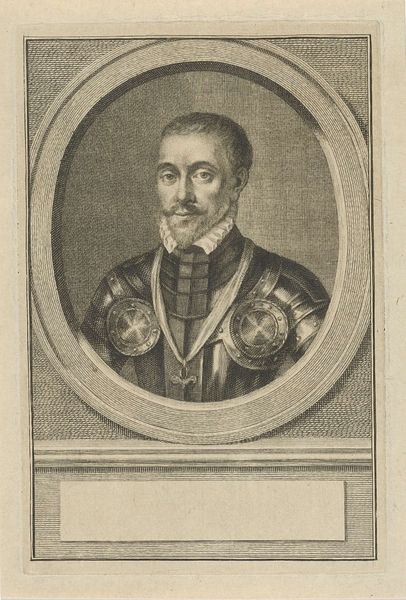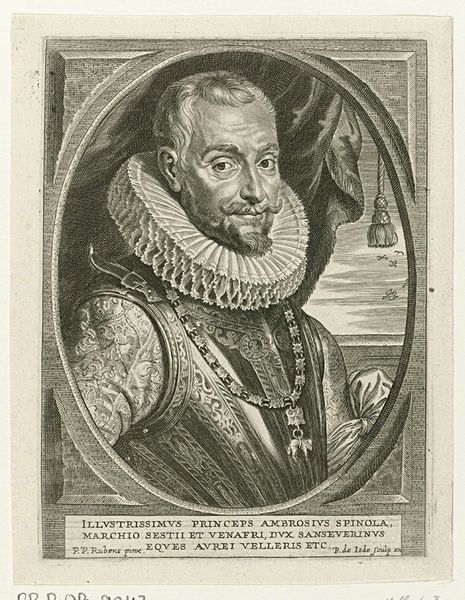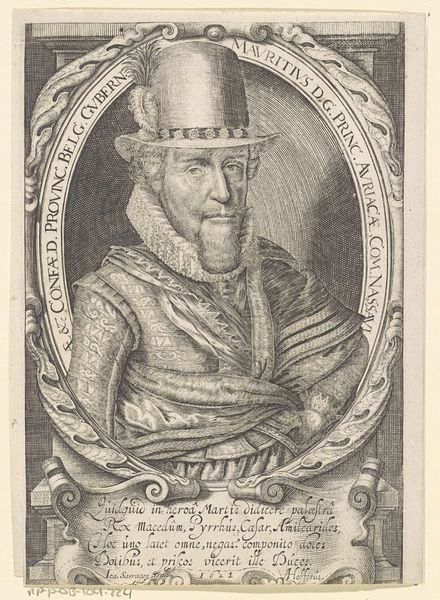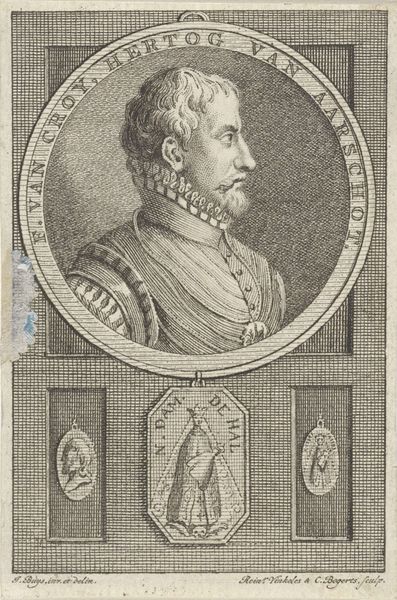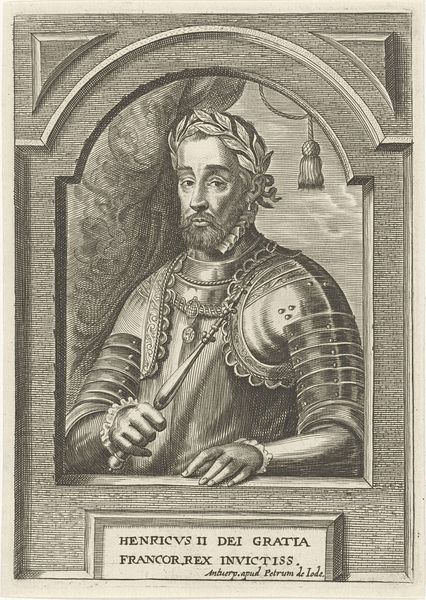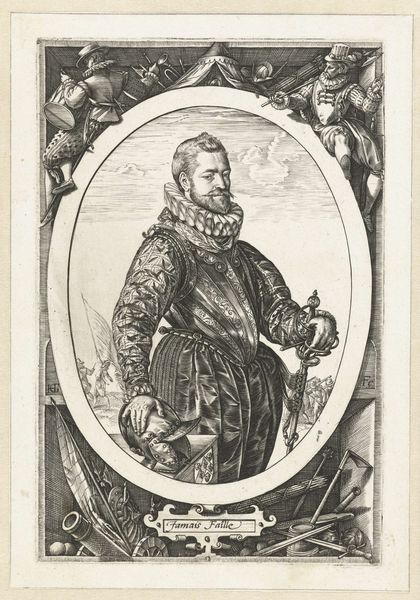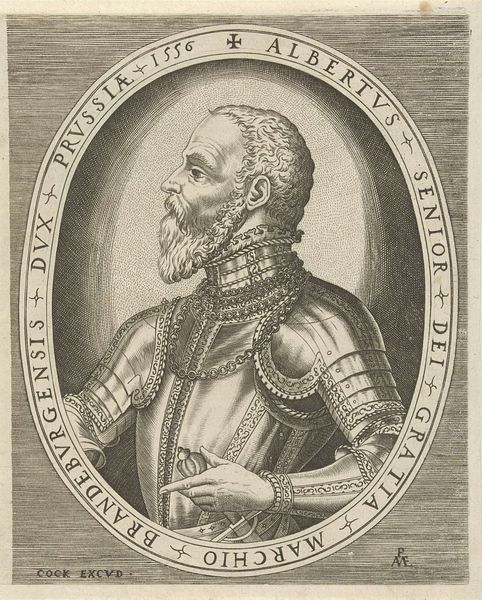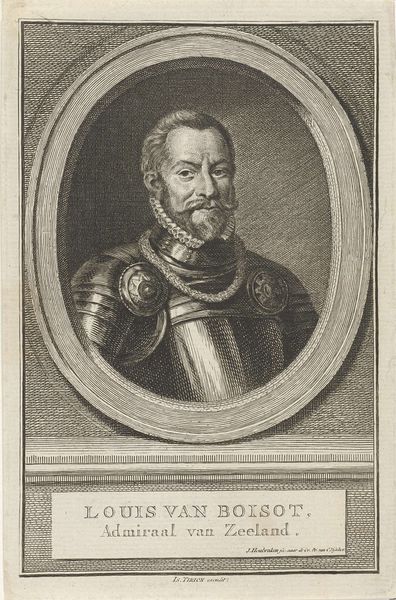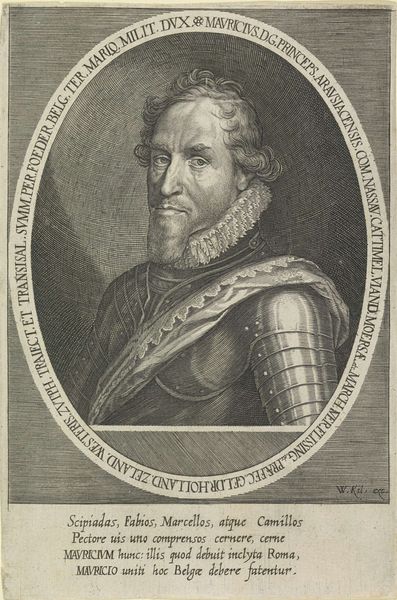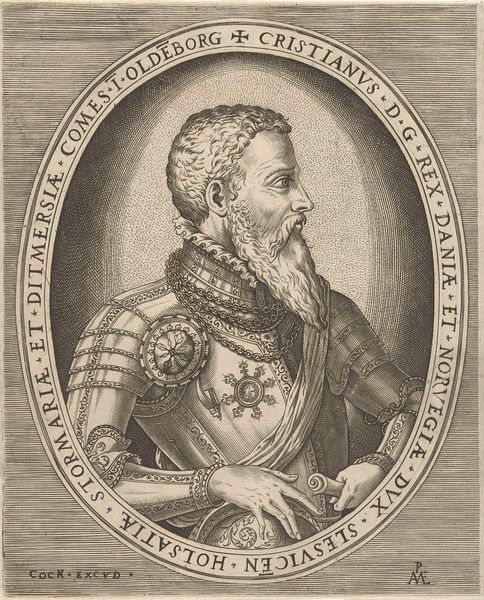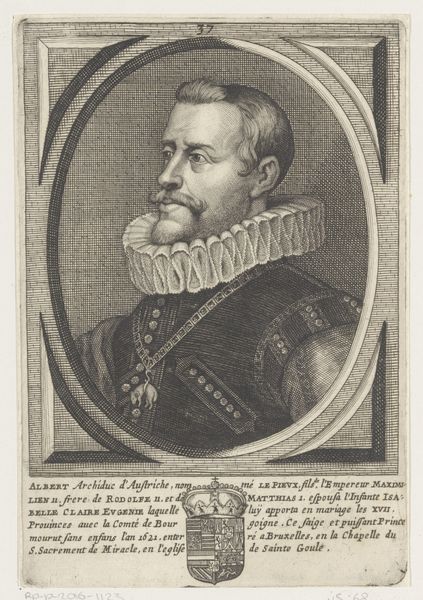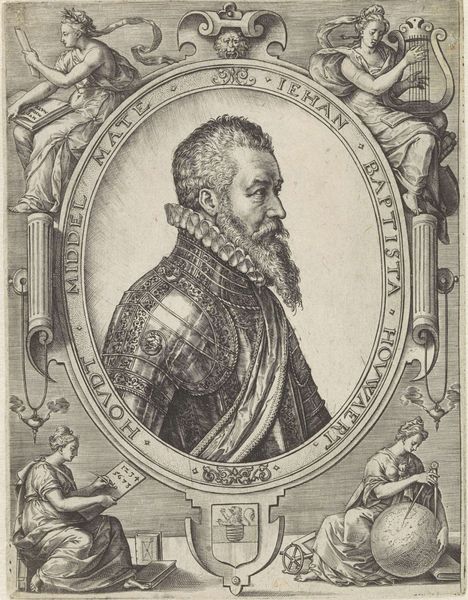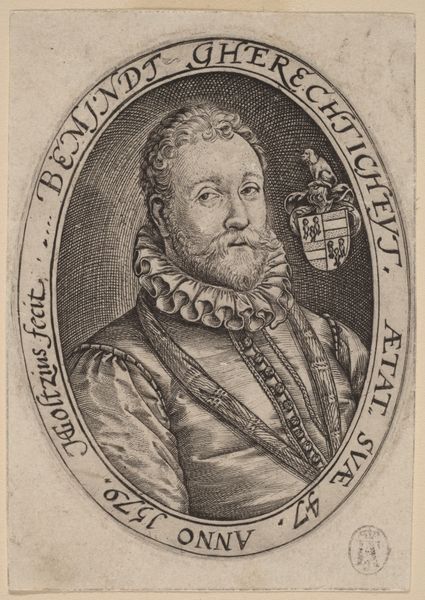
carving, engraving
#
portrait
#
carving
#
old engraving style
#
caricature
#
form
#
11_renaissance
#
line
#
history-painting
#
engraving
Dimensions: height 140 mm, width 83 mm
Copyright: Rijks Museum: Open Domain
Curator: Here we have a work entitled "Portret van kardinaal Pierre d'Aubusson," an engraving that scholars believe was created before 1752. Editor: It's striking how stern yet regal he appears. The sharp lines and hatching give it a somber, almost weighty feel, don't you think? The overall mood just resonates as very serious to me. Curator: Indeed. This image comes to us from a period where portraiture was as much about projecting power and status as it was about likeness. Engravings like these also circulated widely, establishing Pierre d'Aubusson's image throughout various political and social spheres. Editor: You know, that symbolic cross featured beneath his portrait – what exactly does it tell us about the values they sought to associate with him? Is it related to the Knights Hospitaller perhaps, or other associated aspects of chivalry or the crusades? Curator: Precisely! The Maltese Cross and heraldry link him directly to his role as Grand Master of the Knights Hospitaller. It also underlines the important role that that order held in Rhodes at the time this work was probably created. The cross and the surrounding emblems acted as visual shorthands that conveyed all of that at once, a powerful assertion of his authority and affiliations. Editor: So it's designed to convey strength and position. But his armor feels both archaic and vulnerable. It seems to remind us of the more human aspects despite all the status he tries to embody through heraldry, office, and representation in art. Curator: Good point! Consider the print's probable audience and context. Likely displayed within noble collections or political offices, this image served to remind viewers of d'Aubusson's legacy. It was also likely important for his political reputation. Editor: So it's a carefully crafted image, made for consumption within particular social and power networks, a constant visual echo of authority? Curator: Absolutely. It served as a continual assertion of the cultural authority wielded by its subject and by its patrons, reflecting prevailing values related to nobility, piety, and martial strength. Editor: A fascinating intersection of artistry, persona, and the careful cultivation of historical memory. It reminds you how deliberately constructed historical narratives can be. Curator: Indeed, and it illustrates how political identity and its image can be interwoven within society, both during its moment and for posterity.
Comments
No comments
Be the first to comment and join the conversation on the ultimate creative platform.
